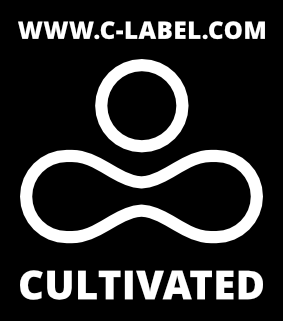Related posts

As cultivated meat transforms the food industry with promises of sustainability and ethics, the introduction of the C-Label sets a new standard for transparency. Bridging the gap between innovation and consumer trust, this certification guides producers and consumers alike through the complexities of this groundbreaking category. The Cell Base spoke to Renato Pichler, V-Label founder, to find out more about the implications of this new labelling system.
The emergence of cultivated meat has sparked a revolution in the food industry, promising a more sustainable, ethical and innovative approach to producing animal protein. As this new frontier rapidly advances, consumers and producers alike face a pressing challenge: how do we ensure transparency, trust and clarity for these groundbreaking products? This is where labelling plays a critical role.
For over 25 years, the V-Label has been a global leader in certifying vegan and vegetarian products. With its distinctive mark recognised by millions, V-Label has bridged the gap between consumers’ expectations and producers’ commitments, fostering trust in plant-based foods. Building on this legacy, the C-Label emerges as a pioneering certification tailored to cultivated meat – a groundbreaking category that combines scientific innovation with ethical responsibility.

The need for a dedicated label for cultivated meat stems from its unique position in the food ecosystem. Unlike traditional meat or plant-based alternatives, cultivated meat is grown directly from animal cells, circumventing the need for breeding or slaughter. While the technology offers profound benefits – such as reducing environmental impact, eliminating animal suffering and ensuring food safety – it also introduces complexities that demand clear communication. Consumers are eager to understand how these products are made, whether they align with their values, and how they compare to conventional options.
The C-Label answers these questions by serving as a trusted guidepost. It assures consumers that certified products meet rigorous standards for sustainability, animal welfare, and innovation. From the exclusion of fetal bovine serum (FBS) in production to the use of stress-free cell sourcing methods, the C-Label criteria underscore a commitment to ethical practices and cutting-edge technology. By doing so, it not only empowers consumers but also helps producers differentiate their offerings in a competitive marketplace.
Moreover, the introduction of the C-Label underscores the importance of evolving alongside consumer expectations. Just as the V-Label brought clarity to the vegan and vegetarian industry, the C-Label seeks to demystify cultivated meat, making it accessible and appealing to a broad audience. It represents a seamless extension of the values that have guided our work for decades: promoting animal welfare, fostering sustainability, and ensuring product integrity.
As cultivated meat continues to capture the public imagination, the role of certification becomes even more critical. Labels like the C-Label provide the transparency necessary to build consumer confidence and accelerate adoption. They highlight the extraordinary efforts of producers who are pushing the boundaries of what’s possible, ensuring that their innovations are not only groundbreaking but also responsible and ethical.

Here, we asked Renato a few questions about the new label and its implications for the cultivated meat sector.
Could you share the main vision behind launching this label for cultivated products? What role do you hope it will play in shaping the industry?
The production of cultured products is currently very controversial. There are some justified points of criticism. On the other hand, this new method of food production offers many advantages regarding animal welfare and environmental protection. With our new C-Label, we want to introduce an ethical standard so that consumers can choose products that are ethically recommended.
Given that this is the first label of its kind, what prompted the timing of the launch? Why is now the right moment to introduce it?
The first countries have already approved cultured meat, and the first products are now being introduced in the animal feed sector in Europe. The C-Label will thus help to build the market from the outset by providing consumers with guidance.
What impact do you anticipate this label will have on industry transparency and traceability? How might it address key concerns within cellular agriculture?
Technology is developing very quickly in this area. As a result, companies are also very keen to keep their production methods secret. It is therefore all the more important for consumers that there is an independent label that monitors production according to the points that are most important to consumers.
How do you envision this label influencing the acceptance of cultivated products among industry stakeholders, consumers and regulatory bodies?
The C-Label acts as an interface between producers and consumers. The C-Label guidelines address the main concerns of consumers. Insofar as the regulatory authorities issue regulations intended to protect consumers, it can also provide useful information here.
Are there any specific consumer or market trends that inspired the development of this label? How will it meet these evolving demands?
The disadvantages of conventional meat production are becoming increasingly well known. However, many consumers are still unsure about cultured meat. The C- Label is therefore intended to promote the switch from meat from abattoirs.
Could you share any exclusive insights into the development process? Were there particular challenges or breakthroughs that shaped the label’s final form?
The technologies for producing cultivated products are still in the midst of development. It is therefore a challenge to select the criteria for a label in such a way that they also make sense in the long term.
In the early days, cultured meat was produced using fetal calf serum. This serum is produced by killing pregnant cows and extracting the blood of their unborn calves. Only when it became possible to completely avoid this serum in production was it also possible to introduce a label.
Do you expect this label to become a benchmark or inspire similar standards across the cultivated sector? If so, which areas of the industry might be most influenced?
The C-Label places high demands on producers. We use it to show what is already technologically possible today. As it is the first label of its kind, it is quite possible that other regulations will be based on it in the future.
Are there any long-term goals tied to this label, such as fostering industry innovation, supporting partnerships, or advancing consumer education?
The C-Label is also intended to stimulate discussion about the new cultivated products. We will also play an important role in consumer questions.
#CLabel #cultivatedmeat #interview #ProVeg #labelling













